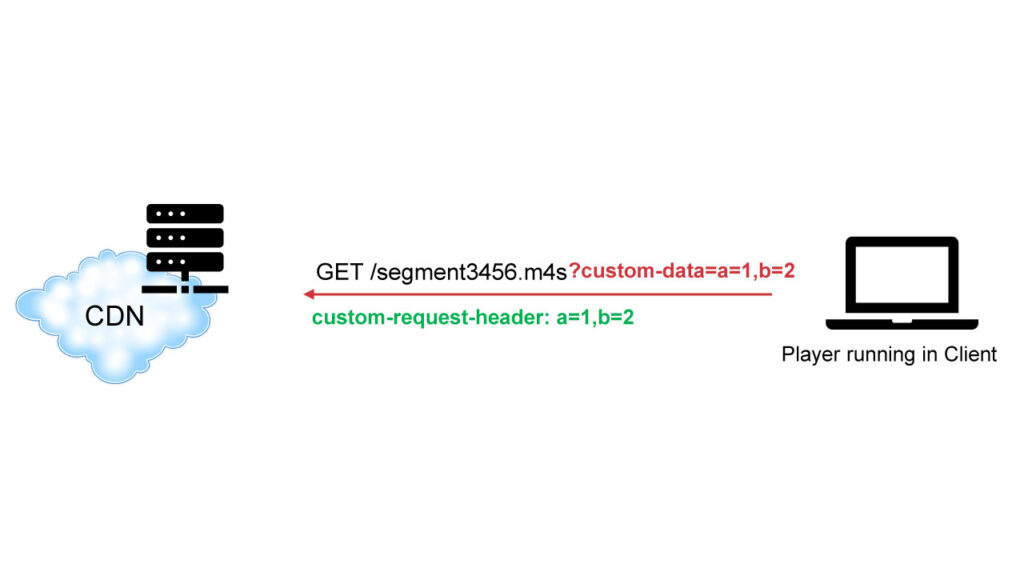
Common Media Client Data – does it matter for DVB?
CMCD: what it is and does
Will Law (Akamai)
Media players and the content delivery networks (CDNs) that serve them live in two separate worlds. At the media player is the notion of a playback session which, as an example, may last for an hour as the end user watches a sporting event. Over that time there may be some rebuffering issues and the player may switch bitrates.
Due to the nature of segmented media playback, the CDN’s view of this same event is thousands of independent requests for video files, audio files, caption files and playlists. These requests are intermingled with the millions of other requests made to the CDN at the same time. It is very difficult for content distributors or the CDNs themselves to look at CDN logs and infer anything about the quality of experience (QoE) of an individual session, or of the aggregate health of a player cohort.
The industry needed a bridge between these two worlds – a mechanism by which a player can communicate mutually beneficial media-related information to a CDN. This method of exchange was standardized as Common Media Client Data (CMCD) CTA-5004 by the Consumer Technology Association in September 2022.
CMCD defines a simple set of rules by which media players attach structured information to each media object request as either a query argument or a custom header. This CMCD data is added to the CDN logs and is processed by both the CDN and the content distributor. Player support has grown rapidly, with most player ecosystems, including AVPlayer and Exoplayer, now supporting CMCD.

CMCD is simple to understand, simple to implement and common across all players and all CDNs. The use cases that CMCD enables are broad, including robust prefetching, analytics solutions, forensic debugging, CDN delivery optimization, alerting and monitoring systems, low-latency optimizations, server-side switching, research analytics, and content steering decisioning.
CMCD: why it matters for DVB
Thomas Stockhammer (Qualcomm)
Television and media distribution is gradually migrating to IP- and internet-based delivery. DVB has taken major steps to support this transition, with the development and continuous improvements of DVB-I, DVB-DASH and related technologies serving the needs of internet-based television.
CDNs are the backbone for new media delivery. DVB-based television services are known to be of the highest quality and provide a consistent and reliable user experience. Traditional DVB broadcast systems, such as DVB-T2 or DVB-S2, can ensure consistent quality through proper network planning ahead of operations. For DVB-I signalled services delivered with DVB-DASH, one must rely on best-effort networks and the opportunistic nature of CDNs and the internet. In order to monitor the service across a variety of DVB-DASH clients in DVB-I signalled services, the collection of client metadata is of utmost relevance. This data may then be used for operational improvements of the service, for example changing encoding, adding CDNs, using advanced technologies such as content steering, and many more opportunities.
Examples for such operational improvements have been presented here and include understanding regional streaming and network performance in real-time; or switching selected users mid- stream to the best available infrastructure. In a data-driven world, such real-time operational information will change entirely the way television services can be operated.
DVB has thus decided to adopt CMCD in its DVB-DASH specification and has initiated technical work based on requirements that were approved in Q2 2024, considering specifics on collecting CMCD data in DVB services. Furthermore, DVB will investigate whether CMCD data can also be collected and beneficially used for DVB-MABR, DVB-NIP and potentially traditional DVB broadcast services, if they are part of a DVB-I service offering.
This article first appeared in Issue 64 of DVB Scene magazine.
Will Law is a Chief Architect within the Cloud Technology Group at Akamai, involved with streaming media for over two decades, with a strong focus on client-side development.
Thomas Stockhammer is Director of Technical Standards with Qualcomm. He is a leading contributor to a wide range of standardization activities.
